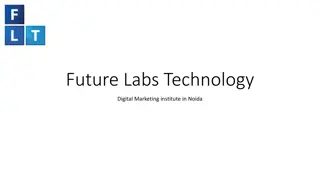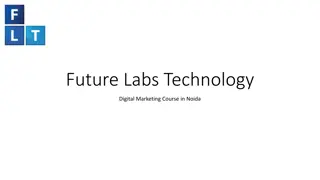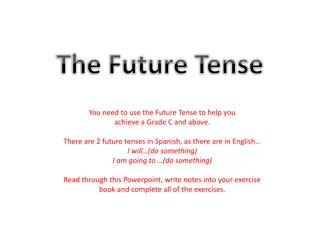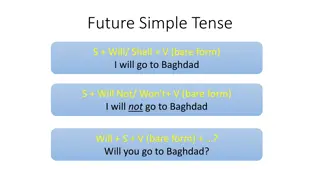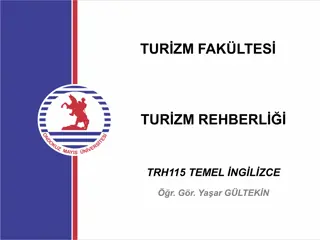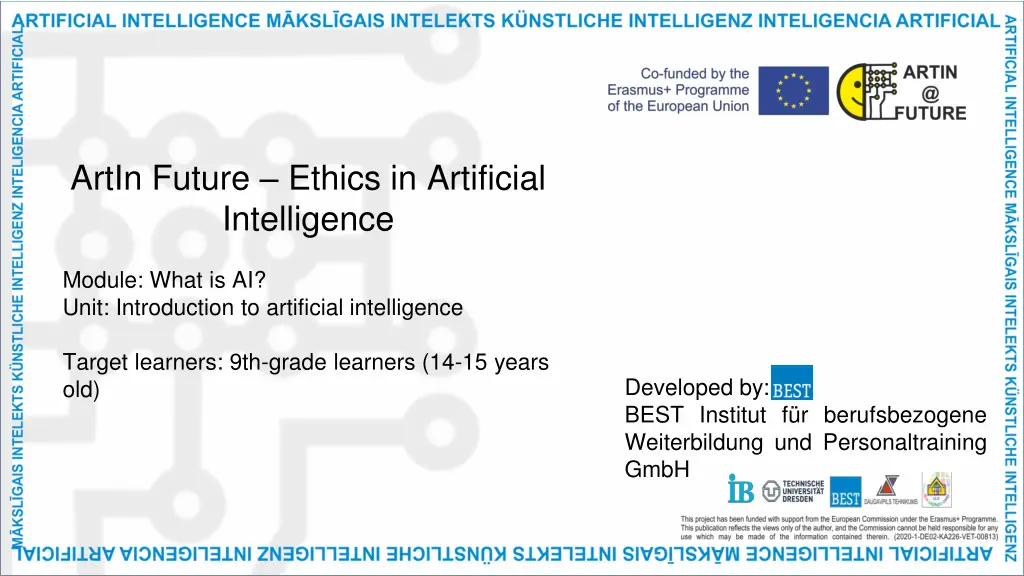
Understanding Artificial Intelligence: A 9th Grade Introduction
Explore the fascinating world of artificial intelligence with this module designed for 9th-grade learners. Discover the history, capabilities, and impact of AI in today's society. Join us on this educational journey into the realm of non-human intelligence.
Download Presentation

Please find below an Image/Link to download the presentation.
The content on the website is provided AS IS for your information and personal use only. It may not be sold, licensed, or shared on other websites without obtaining consent from the author. If you encounter any issues during the download, it is possible that the publisher has removed the file from their server.
You are allowed to download the files provided on this website for personal or commercial use, subject to the condition that they are used lawfully. All files are the property of their respective owners.
The content on the website is provided AS IS for your information and personal use only. It may not be sold, licensed, or shared on other websites without obtaining consent from the author.
E N D
Presentation Transcript
ArtIn Future Ethics in Artificial Intelligence Module: What is AI? Unit: Introduction to artificial intelligence Target learners: 9th-grade learners (14-15 years old) Developed by: BEST Institut f r berufsbezogene Weiterbildung und Personaltraining GmbH
What is artificial intelligence? Artificial intelligence (AI) is a non-human intelligence. It s a machine s ability to think, learn, plan or make decisions in a way similar to humans. Unit Lesson 1.1 Introduction to artificial intelligence Source: https://www.pexels.com/photo/robot-s-hand-on-a-blue-background- 8386437// This project has been funded with support from the European Commission under the Erasmus+ Programme. This publication only reflects the views of the author, and the Commission cannot be held responsible for any use which may be made of the information contained therein. (2020-1-DE02-KA226-VET-00813)
What is AI? Artificial intelligence can collect data, analyse it, learn from it, and make decisions based on the knowledge it has. Unlike humans, who can only process small amounts of information, AI can work with a vast amount of information. 1.1 Introduction to artificial intelligence Source: https://www.pexels.com/photo/green-and-yellow-printed-textile-330771/ This project has been funded with support from the European Commission under the Erasmus+ Programme. This publication only reflects the views of the author, and the Commission cannot be held responsible for any use which may be made of the information contained therein. (2020-1-DE02-KA226-VET-00813)
History of AI The idea of artificial intelligence dates back to the 1950s, when Alan Turing, a famous British computer scientist, mentioned thinking machines for the first time. 1.1 Introduction to artificial intelligence Source: https://www.pexels.com/photo/close-up-shot-of-a-white-robot-6019019/ This project has been funded with support from the European Commission under the Erasmus+ Programme. This publication only reflects the views of the author, and the Commission cannot be held responsible for any use which may be made of the information contained therein. (2020-1-DE02-KA226-VET-00813)
History of AI Based on Turing s ideas, John McCarthy, Marvin Minsky, Nathaniel Rochester, and Claude Shannon coined the term artificial intelligence in 1956. That same year this group of American computer scientists founded AI as an academic discipline too. 1.1 Introduction to artificial intelligence This project has been funded with support from the European Commission under the Erasmus+ Programme. This publication only reflects the views of the author, and the Commission cannot be held responsible for any use which may be made of the information contained therein. (2020-1-DE02-KA226-VET-00813)
AI today Artificial intelligence has significantly progressed in the 21stcentury compared to its beginnings. Nowadays, it is not only capable of collecting and processing a large amount of information and work autonomously, but it can also adapt its behaviour by independently analysing its previous actions. 1.1 Introduction to artificial intelligence Source: https://pixabay.com/de/illustrations/fragezeichen-k%c3%bcnstliche- intelligenz-6786623/ This project has been funded with support from the European Commission under the Erasmus+ Programme. This publication only reflects the views of the author, and the Commission cannot be held responsible for any use which may be made of the information contained therein. (2020-1-DE02-KA226-VET-00813)
Types of AI Based on the form it takes, there are two types of AI: 1. Software AI virtual assistants, search engines, image analysis software or speech and language recognition systems. 2. Embodied AI in robots, self-driving cars, drones or Internet of Things. 1.1 Introduction to artificial intelligence Source: https://www.pexels.com/photo/miniature-toy-robot-on-top-of-laptop-s-keyboard- 8566458/ This project has been funded with support from the European Commission under the Erasmus+ Programme. This publication only reflects the views of the author, and the Commission cannot be held responsible for any use which may be made of the information contained therein. (2020-1-DE02-KA226-VET-00813)
Types of AI Based on its performance ability, there are: 1. Weak or artificial narrow intelligence (ANI) 2. Strong or artificial general intelligence (AGI) 3. Artificial superintelligence (ASI) 1.1 Introduction to artificial intelligence Source: https://www.pexels.com/photo/person-pointing-numeric-print-1342460/ This project has been funded with support from the European Commission under the Erasmus+ Programme. This publication only reflects the views of the author, and the Commission cannot be held responsible for any use which may be made of the information contained therein. (2020-1-DE02-KA226-VET-00813)
Questions or comments? 1.1 Introduction to artificial intelligence Source: https://www.pexels.com/photo/robot-pointing-on-a-wall-8386440/ This project has been funded with support from the European Commission under the Erasmus+ Programme. This publication only reflects the views of the author, and the Commission cannot be held responsible for any use which may be made of the information contained therein. (2020-1-DE02-KA226-VET-00813)
Food for thought How much did you know about AI before the class? What are your thoughts on the future of AI? Do you think we are capable of developing AI which is more powerful than human intelligence? 1.1 Introduction to artificial intelligence This project has been funded with support from the European Commission under the Erasmus+ Programme. This publication only reflects the views of the author, and the Commission cannot be held responsible for any use which may be made of the information contained therein. (2020-1-DE02-KA226-VET-00813)
Further reading To give you more information about AI: AI in a nutshell: https://www.techopedia.com/definition/190/artificial- intelligence-ai Unit Lesson AI definition and terminology: https://towardsdatascience.com/artificial-intelligence-ai- terms-simply-explained-745c4734dc6c 1.1 Ethical principles and their relevance to ICT and AI Videos about AI: Artificial intelligence in 5 minutes: https://www.youtube.com/watch?v=ad79nYk2keg AI and its future: https://www.youtube.com/watch?v=SN2BZswEWUA This project has been funded with support from the European Commission under the Erasmus+ Programme. This publication only reflects the views of the author, and the Commission cannot be held responsible for any use which may be made of the information contained therein. (2020-1-DE02-KA226-VET-00813)
Project website: www.ai-future-project.eu Facebook page: facebook.com/artin-future











